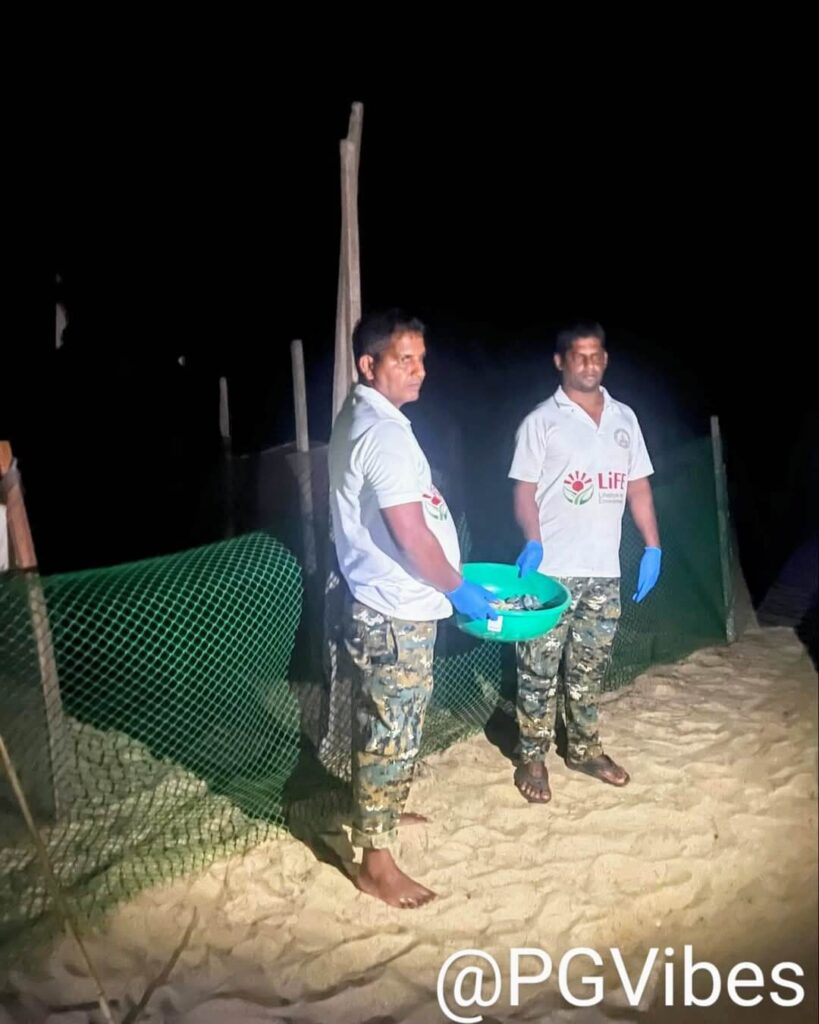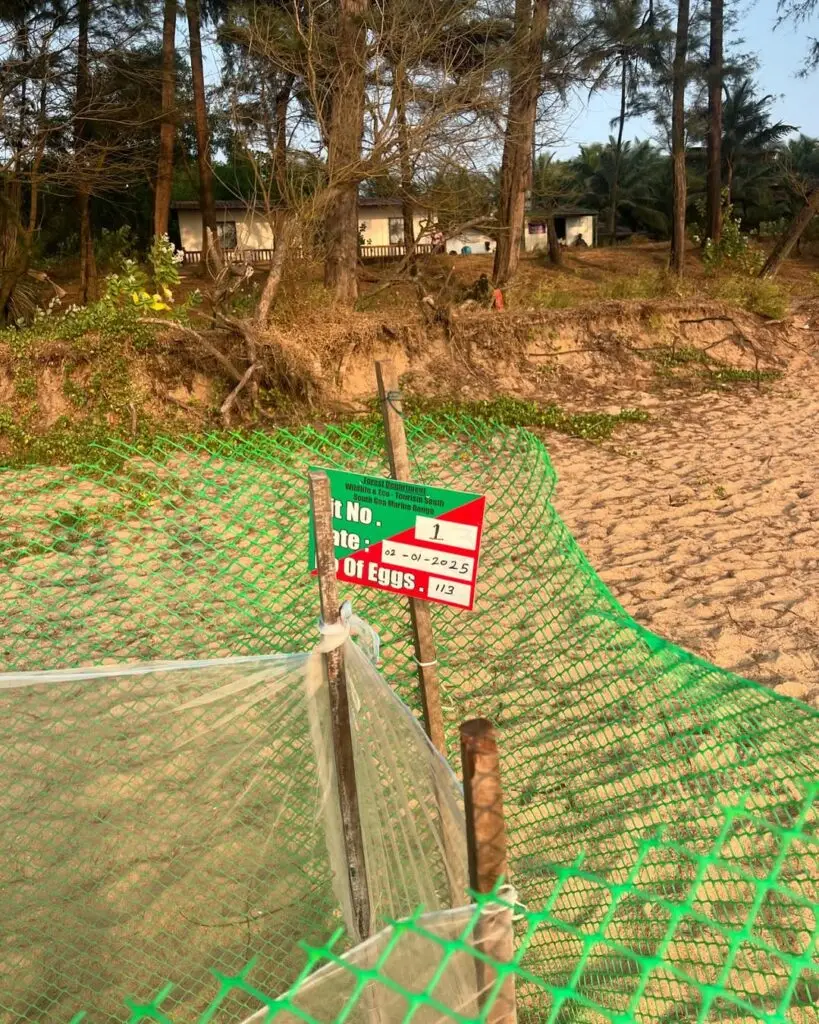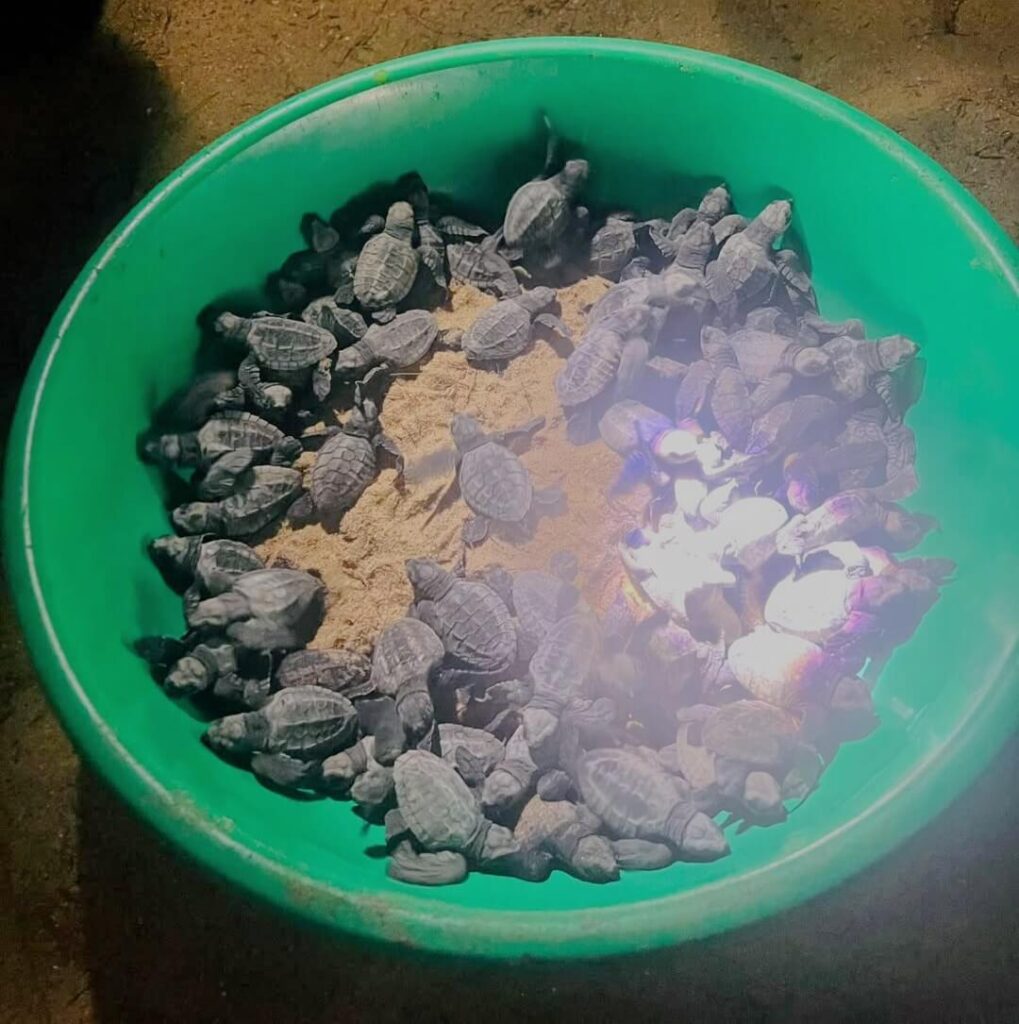Turtle Nesting Goa: A Nation-wide Wonder
India’s coastline is like a natural nursery for sea turtles—five species including the Olive Ridley, Green, Hawksbill, Leatherback, and Loggerhead call it home. Of these, Olive Ridleys are the most common,New! Swiss 2025 Fake Rolex Watches. though still classified as Vulnerable by IUCN- International Union for Conservation of Nature and protected under India’s Wildlife Protection Act, 1972
On the East Coast, Odisha’s Gahirmatha renowned as the world’s largest known nesting ground for Olive Ridley sea turtles legendary: in one week alone in 2017, over 200,000 baby turtles hatched there.The west coast—Goa included—usually sees smaller, solitary nesting. But that doesn’t make it any less precious.
In some places like Odisha, Olive Ridleys come ashore in huge groups called arribadas- “It’s a beautiful natural phenomenon where large groups of female Olive Ridley turtles arrive together on the beach to lay their eggs, usually under the cover of night.” But here in Goa, things are more peaceful. These turtles show up alone or in small numbers under the moonlight. Replica Watches UK – 2025 New Quality Hublot Replica Watches.If you spot even one coming to lay eggs, trust me—your heart will skip a beat!
They start nesting around late November or early December, and you can see them even till April or May—when the weather is just right. Each turtle lays around 80 to 120 eggs, usually on the same beach where she was born. Isn’t that something?
What makes Goa extra special these days is how well the nests are protected. Most are moved gently to safer hatcheries, so baby turtles have a better chance to survive and crawl into the sea.

Why This Matters to You & Me
As a Goan, I feel proud that we have such beautiful and protected turtle nesting sites in our state. It’s heartwarming to see our Forest Department and passionate NGOs doing everything they can—year after year—to keep these sites safe, raise awareness, and involve locals in conservation. I still remember the day I saw turtles coming to Galgibaga Beach. I didn’t even click a picture, because I didn’t want to disturb them. That moment stayed with me. We, as humans, must respect all creatures and understand that nature doesn’t belong to us alone. Protecting these habitats is our shared responsibility.
You know what’s wild?
Agonda, last year — 181 turtle nests. Just a year before that, it was somewhere around 60-something. That’s not a small jump. That’s something else, right?
Even North Goa, from Jan to May this year, they counted nearly 18,000 eggs. That’s not me making it up. That’s proper records. Forest department folks and volunteers walking the beaches, keeping track.
And altogether, across the whole state? Thirty-five thousand-plus eggs in one season. Biggest in almost 30 years. No joke.
But let’s be real — this isn’t happening just like that. It’s not just because the turtles felt nice. A lot of people are out there doing real work—Forest guards, groups like Vanashakti, and Sea Turtle Trust. They’re out there every evening. Cleaning. Watching. Teaching locals how to protect the nests. Even schools are pitching in. It’s become a proper movement.
Also Read:7 Best Places to Visit in Goa in Monsoon – Calm & Hidden in Canacona
Goa’s Turtle Beaches – Where It Actually Happens

If you’re in South Goa, the first place you need to check is Galgibaga Beach. Locals call it “turtle beach” and for good reason. It’s around 7 km from Palolem, so not far. But it feels like a different world. No loud tourists. No flashy lights. Just a clean stretch of sand, coconut trees, and a lot of silence.
Nesting usually starts here in December. You’ll see a few ropes tied around small pits — that’s where the eggs are. Forest guards keep an eye, and even the villagers there? Respect. They’ve started treating the turtle nests like family property. No one touches them.
Then there’s Agonda. About 10 km up the road. More cafes and visitors, but still peaceful in its own way. Last season, they had over 180 nests. Even the café folks are now on board. After sunset, you’ll hear them telling guests, “Lights off, please — nesting zone.” Music goes soft, and sometimes stops altogether. That’s when you know something good is happening.
Morjim, in the north, is different. Bit more touristy. But they’ve got a turtle interpretation centre there, near the Chapora River. One long stretch — around 600 metres — is kept strictly low-light, no-noise. Some tourists don’t get it. But locals and guards do their job.
So Who’s Helping the Turtles?
Not Just Forest Officials,Locals are also in the list.Shack management,their staff, even travellers who keep coming back every year as volenteers .
You’ll see youngsters joining the night patrols. Not for money or likes — just because they care. Some of them even help move the eggs safely if the nests are too close to the water and a chance to experiance the amazing national geography series in real.
And not to forget the NGOs—working full-time, day and night. People from Sea Turtle Trust and Vanashakti come and do workshops. They don’t just talk science stuff. They speak in our language. They explain it like, “If this turtle doesn’t come back, something in the sea will get messed up. Maybe fish you eat, maybe the balance of the ocean.” And suddenly people understand. So just imagine how big this really is.
It’s not all fancy. No banners or viral campaigns. But it’s real work. Small steps. Quiet work. And it’s working.
Mandrem? Fewer nests, maybe one or two in a season. But still, they take it seriously. Locals don’t fool around with sound or bright lights after dark.
And the best part? It’s locals helping locals. Shack owners dimming lights. Fishermen keeping quiet. Kids picking up plastic without being told.
📅 When to Visit & What You Might Actually See
Look, turtle nesting doesn’t come with a showtime on a board, friends. It’s a matter of feeling the mood
🕒 When to Go?
Somewhere between November or December through April, sometimes stretching into May—this fits reports from the Goa Forest Department, which notes that the nesting season can shift from September start to December–April/May.
If you want the best shot, plan a trip around January to March—that’s the peak, and you can experience it if you’re lucky.
🕰 Timing Matters:
Head to the beach either before sunrise (around 5–6 AM) or late at night when it’s absolutely silent. Chat with locals and fishermen—they know more than any guidebook. These timings match what many turtle watchers and reports say: turtles arrive after midnight to early morning.
👀 What You Might See:

A turtle crawls from the water, slow and steady. She picks a spot, digs using her back flippers (takes time), lays around 80–120 eggs, covers them up, and heads back to the sea.
Or, if it’s hatching time, you might spot tiny hatchlings cracking out of the sand (usually after 50–60 days) and scuttling toward the ocean.
It’s not dramatic like a festival—just slow-motion nature in action. But trust me, goosebumps come free of charge. I experienced it myself, with a few foreigners at Galgibaga after getting a call from my local friend.
And here’s the real truth: there’s no guarantee. Some nights, nothing happens. Other nights… everything happens in silence. You’re there, you wait. And if nature’s in the mood—it’s showtime. It’s pure luck.
🚫 Rules You Gotta Follow (Seriously, Don’t Be That Tourist)
This ain’t some wildlife show where you clap and take selfies. Turtle nesting is serious business. And trust me, if you break the rules, not only will you ruin it for the turtles — you’ll also get a good scolding from the locals. Maybe worse.
❌ What NOT to Do:
- No flashlights. Your phone light is enough to confuse a baby turtle. Use red light if you really need to see.
- No loud music or shouting. You’re not in Baga, bro. Keep it peaceful.
- No beach bonfires near the nests. That warmth and light? Deadly for eggs.
- Don’t touch the nests or turtles. Not even “just for a pic.” These are protected species.
- No stepping into roped zones. Forest guards and volunteers work hard to mark nests. Respect that.
And yes — lights matter. That’s why locals and shack owners turn them off after sunset during nesting season. If they can do it, so can you. Want to see turtles? Then play by their rules.
Final Words – From One Goan to Another (And to You, Traveller)
I don’t know about you, but for me… seeing a turtle on a Goan beach — just one, slowly making her way across the sand — feels more powerful than all the beach parties and fire shows put together.
This is real Goa, boss. The kind our grandparents knew. The kind we still get to see if we slow down and respect it.
And look, I’m not saying everyone has to become a turtle expert or join some NGO. But next time you’re at Galgibaga, Agonda, or even Morjim — just be mindful. Look down, walk slow, keep your phone in your pocket for once.
Because if they’re coming back — these turtles — it means we’re doing something right.
And honestly? That’s something worth holding on to.
So let’s not mess it up, no? Let’s leave the beach a little cleaner, the lights a little dimmer, and our voices a little softer. Not for us. For them.
They were here before us. Hopefully, they’ll still be here long after.
